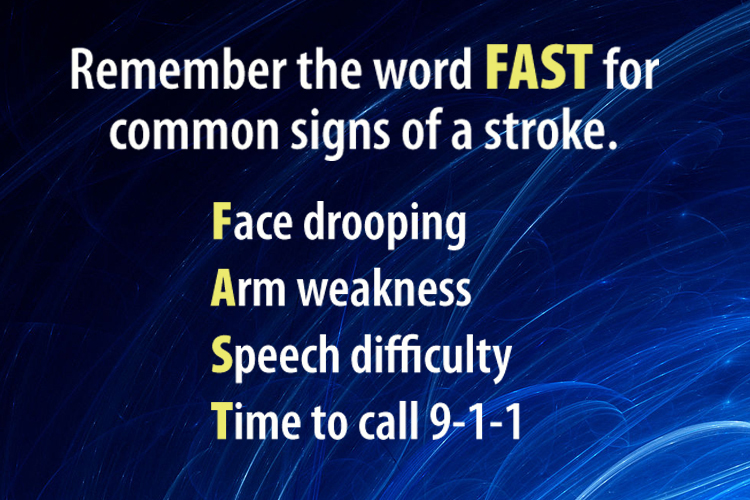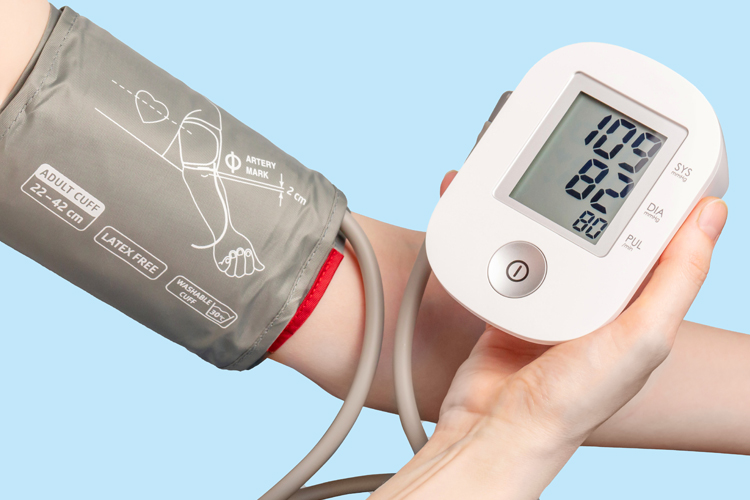
Posted: June 18, 2024
Recognizing the early warning signs of a stroke is crucial for seeking immediate medical attention. A stroke is a medical emergency, and getting emergency medical help right away can reduce the risk of brain damage and other stroke complications. The good news is that fewer Americans than ever die of a stroke today compared to the past, and there are effective treatments that can help prevent permanent disability from a stroke. This article includes information about the types of stroke, early warning signs, risk factors, and treatments. This information should not replace the guidance of one’s physician.
There are two types of stroke: An ischemic stroke occurs when the blood supply to part of the brain is blocked or reduced, preventing brain tissue from getting oxygen and nutrients. Brain cells begin to die in minutes. Another type of stroke is a hemorrhagic stroke. It occurs when a blood vessel in the brain leaks or bursts, causing bleeding in the brain. The blood increases pressure on brain cells and damages them.

Understanding the early warning signs of a stroke can assist you in seeking immediate medical attention. You can remember the common signs of a stroke by using the acronym FAST:
Additionally, other signs and symptoms of a stroke may include sudden confusion, trouble walking, dizziness, severe headache with no known cause, vision problems in one or both eyes, and sudden numbness or weakness in the face, arm, or leg, especially on one side of the body.
Remembering these signs can help you or someone else recognize a stroke quickly and seek medical help promptly, which is crucial for minimizing potential long-term damage and improving the chances of recovery. If you or someone you know experiences any of these symptoms, it’s essential to seek immediate medical attention by calling 9-1-1.

Certain risk factors contribute to the likelihood of having a stroke. The following provides a breakdown:
Managing and controlling these risk factors through lifestyle changes, medication, and medical interventions can help reduce the likelihood of having a stroke. Regular checkups and consultations with healthcare professionals are essential for stroke prevention and management.
While many stroke warning signs are similar for both men and women, medical professionals have noted some differences. Both men and women may experience sudden numbness or weakness in the face, arm, or leg, especially on one side of the body, trouble speaking or understanding speech, and difficulty walking, among other symptoms. However, women may also experience additional symptoms such as the sudden onset of hiccups, nausea, chest pain, shortness of breath, palpitations, and generalized weakness.
Keep in mind that these symptoms can vary from person to person and not everyone will experience all of them.
The treatment for stroke depends on whether it’s an ischemic stroke (caused by a blood clot blocking an artery) or a hemorrhagic stroke (caused by bleeding in the brain).
Ischemic stroke treatment may include the following:
Hemorrhagic stroke treatment may include the following:
Physicians will often monitor stroke patients in an ICU to manage complications and ensure optimal care. They may prescribe medications to prevent complications such as blood clots, infections, and seizures. Stroke rehabilitation plays an important role in recovery. Physicians will likely recommend physical therapy, occupational therapy, and/or speech therapy – as soon as 24 to 48 hours after a stroke – to help stroke survivors regain lost abilities and improve their quality of life. Rehabilitation may also be recommended beyond the length of a hospital stay within a skilled nursing facility such as The Suites at Someren Glen, where a multidisciplinary team of nurses, Physical Therapists, Occupational Therapists, and Speech Language Pathologists work together to provide comprehensive care and treatment.
If you or a loved one is showing warning signs of a stroke, call 9-1-1 immediately.